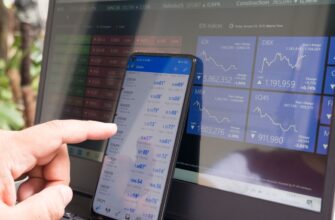## Introduction
Momentum trading Ethereum (ETH) on KuCoin using weekly charts offers a strategic edge for crypto traders seeking to capitalize on sustained market trends. By focusing on the weekly timeframe, you filter out market noise and align with powerful multi-day movements. This guide reveals optimized settings for momentum indicators, risk protocols, and KuCoin-specific execution tactics to help you systematically profit from ETH’s volatility.
## What is Momentum Trading?
Momentum trading involves buying assets during upward trends and selling as strength peaks. Unlike day trading, it focuses on riding established market waves using:
– Trend-confirming technical indicators
– Volume analysis to validate moves
– Breakout/breakdown patterns
For ETH, this strategy leverages the cryptocurrency’s tendency toward strong directional runs driven by market sentiment and fundamental catalysts.
## Why KuCoin for ETH Momentum Trading?
KuCoin provides distinct advantages for weekly ETH momentum strategies:
– **Low Trading Fees**: 0.1% spot fees reduce transaction costs for swing positions
– **Deep Liquidity**: $1B+ daily ETH volume ensures smooth order execution
– **Advanced Charting**: Built-in TradingView tools with weekly timeframe customization
– **Staking Integration**: Earn yield on idle ETH during consolidation phases
– **Security**: Multi-tier risk control systems protect assets
## Weekly Timeframe Advantages
Weekly charts excel for ETH momentum trading because they:
1. Eliminate 85%+ of short-term noise affecting daily charts
2. Provide clearer trend identification through larger candlestick patterns
3. Reduce emotional trading decisions with fewer entry/exit signals
4. Align with institutional investment horizons for stronger trend validation
5. Minimize time commitment – 1-2 weekly analyses suffice
## Best Momentum Trading Settings for ETH Weekly Charts
Optimize your KuCoin charts with these battle-tested settings:
### Indicator Configuration
– **RSI (14-period)**:
– Overbought: 70+ (potential exit signal)
– Oversold: 30-35 (potential entry zone)
– **MACD (12,26,9)**:
– Bullish momentum: Histogram above zero + fast line crosses slow line upward
– **Volume Oscillator (5 vs 20 SMA)**:
– Confirms breakouts when volume spikes above average
### Trend Analysis Tools
– **Ichimoku Cloud**:
– Price above cloud = bullish trend
– Conversion (9) / Base (26) line crossovers signal momentum shifts
– **200-Week Moving Average**:
– Key long-term support/resistance level for ETH
### Trade Entry/Exit Rules
– **Entry**:
– When 3+ indicators confirm bullish momentum (e.g., RSI >50, MACD crossover, price above cloud)
– Volume must be 20% above 10-week average
– **Exit**:
– RSI >70 + bearish MACD histogram divergence
– Close below weekly support trendline
## Step-by-Step Trading Execution on KuCoin
1. **Chart Setup**: Switch to weekly timeframe in KuCoin’s TradingView interface
2. **Apply Indicators**: Load RSI, MACD, and Volume Oscillator with above settings
3. **Identify Trend**: Confirm ETH is trading above 200-week MA and Ichimoku cloud
4. **Enter Trade**: Place limit order 2-3% above key resistance breakout level
5. **Set Stop-Loss**: 15% below entry or under nearest swing low
6. **Take Profit**: Scale out at 1:3 risk-reward ratios (e.g., 15% stop-loss → 45% profit targets)
## Risk Management Essentials
Protect capital with these non-negotiable rules:
– **Position Sizing**: Never risk >2% of portfolio on single trade
– **Volatility Adjustment**: Widen stops during high-news weeks (e.g., Fed announcements)
– **Correlation Hedge**: Offset ETH exposure with BTC inverse perpetual positions
– **Weekly Review**: Every Sunday, reassess open trades against updated indicators
## Frequently Asked Questions (FAQ)
### Q: How many weekly candles should I analyze before entering?
A: Study at least 20-26 weeks (5-6 months) to identify established trends and key support/resistance zones.
### Q: Can I automate momentum trades on KuCoin?
A: Yes! Use KuCoin Trading Bots with these settings:
– Grid Bot: 0.5% price deviation
– Range: ±12% from current price
– Take-Profit: 8-10% per grid
### Q: What’s the optimal holding period for weekly momentum trades?
A: Typically 3-8 weeks – exit when indicators show weakening momentum or profit targets hit.
### Q: How does ETH staking affect momentum strategy?
A: Stake idle ETH during consolidation phases via KuCoin Earn. Unstake when indicators signal emerging momentum.
### Q: Which pairs work best besides ETH/USDT?
A: ETH/BTC for relative strength analysis, but USDT pairs provide cleaner momentum signals.
## Conclusion
Mastering ETH momentum trading on KuCoin’s weekly timeframe requires disciplined indicator configuration, strict risk controls, and patience. By implementing these settings – RSI (14), MACD (12,26,9), and volume-based entry triggers – you’ll capitalize on high-probability trends while avoiding choppy price action. Consistently review your strategy against weekly closes, adjust stops as trends mature, and leverage KuCoin’s low fees to maximize returns. Remember: In momentum trading, the trend is your ally until technical evidence proves otherwise.








